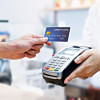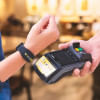Towards a cashless economy driven by contactless payments

Bangladesh has been marching forward very fast, riding on its robust economic growth which is expected to be 6.9 per cent in FY22 and 7.1 per cent in 2023. Among other initiatives, this growth has been due to the far-sighted vision of the government's "Digital Bangladesh" initiative. Digital transformation and the resulting innovations have spurred growth in different sectors, opening new horizons to be explored.
The financial (both banking and non-banking) sector also needs to embrace this digital revolution to inspire people to move towards a more organised digitised society, where transactions can become easier, safer and more convenient.
One such innovation being embraced across the world is contactless payments, which play an instrumental role in developing a cashless society like the one Bangladesh is aspiring for and bringing with it a myriad of benefits and possibilities.
If more people are encouraged to adopt contactless payments and digital transactions, it will have exponential impact. The "National Digital Payments Roadmap 2022-2025" states that digital payments could boost Bangladesh's annual gross domestic product (GDP) by 1.7 per cent, adding $6.2 billion to the economy each year.
Dependence on cash is fraught with issues. According to the study/report titled "Reducing the Cash Transactions" in 2019 by Bangladesh Bank, the country has to spend Tk 9,000 crore annually because of cash dependence and requires 0.50 per cent of the country's GDP for the maintenance (cost) of printed money. Apart from the cost of handling cash itself, there are inherent problems of change, theft and hygiene to deal with.
Owing to these inconveniences, contactless payments are gaining momentum globally with many macro-economic benefits as well. For customers, contactless payments significantly reduce the time needed to complete an in-store payment, resulting in faster checkout. Post-pandemic, the risk of handling cash and potential infections while transacting is also eliminated as a contactless card remains in one's hand.
Paying cash or dipping/swiping a card requires more time and numerous steps, including handing it over to the seller, swiping it through point-of-sale (POS) machines and keying in a password or collecting change, vis-à-vis simply tapping the contactless card and completing the payment process within a few seconds.
As it follows EMVCo security standards, tapping to pay is more reliable, secure and traceable than many other forms of payment.
Like other countries, contactless payments are gaining currency in Bangladesh, especially on the back of the recent regulations allowing contactless payments on debit cards. Several financial institutions are encouraging their customers to adopt contactless payment methods, with over half a dozen banks rolling out contactless cards. At the moment, there are about 4.5 lakh contactless credit cards in circulation in the country and around 42,000 POS terminals can accept contactless payments.
According to the same report of Bangladesh Bank mentioned earlier, today only 6 per cent of total transactions are handled electronically. This requires the ecosystem to come up with initiatives to inspire people, businesses, banking and non-banking financial institutions to opt for contactless payments and help develop a cashless society in the near future.
It is heartening to see that Bangladesh is already embracing contactless payments. With enabling regulations and rising adoption by consumers and merchants, the growth of contactless payments and subsequently a less-cash society is going to be realised soon.
The author is country manager for Bangladesh, Nepal and Bhutan at VISA Inc.

 For all latest news, follow The Daily Star's Google News channel.
For all latest news, follow The Daily Star's Google News channel. 








Comments